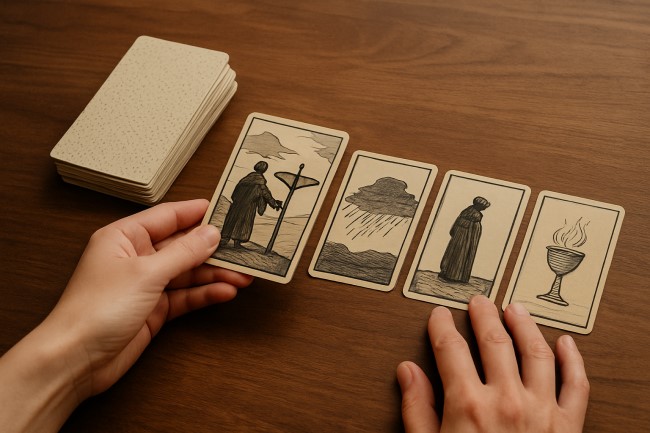How Card-Based Practices Reveal More About Your Mind Than You Think

In recent years, there’s been a noticeable shift in how people seek self-awareness. While traditional methods like journaling or therapy remain popular, symbolic tools — especially card-based practices — are gaining traction. These methods offer something different: a quiet, analogue moment in an increasingly digital world. Through carefully drawn symbols and interpreted meaning, many are finding fresh ways to reflect on their inner world.
The Psychology of Symbolic Systems
At their core, card-based practices operate through metaphor and association. When a person draws a card, the image or message it carries isn’t a prediction but a prompt. It gives the mind something to respond to — a starting point for thought, a mirror for emotion. This encourages pattern recognition and narrative thinking. Rather than offering hard answers, it invites introspection. The meaning isn’t fixed; it emerges in context, shaped by personal experience and current emotion.
Psychologically, this is powerful. Humans naturally search for meaning. By engaging with symbols, individuals begin to notice connections they might not otherwise see. This reflective process doesn’t claim authority; instead, it prompts the individual to become the interpreter of their own thoughts.
Cultural Resonance and Modern Appeal
These practices aren’t new. Their origins stretch back centuries, with roots in spiritual, mystical, and philosophical traditions across various cultures. Yet what’s fascinating is how they’ve evolved into tools of reflection that feel particularly relevant now.
In a time where screen fatigue is real and fast answers dominate, the slow and deliberate nature of card-based methods offers something grounding. There’s no algorithm determining what card is drawn. No predictive text guessing the next move. It’s this unpredictability, this space for quiet interpretation, that appeals to those craving mindful moments. Especially among younger generations, there’s a renewed interest in tactile, personal rituals that feel both meaningful and unplugged.
Every Card Tells a Story
Each card, whether it features a figure standing at a crossroads or an image of a storm passing, carries layers of meaning. These archetypes speak to shared human experiences — decisions, fears, growth, and change. When someone reads a card, they’re not receiving a verdict. They’re engaging with a theme and considering how it applies to their life.
This approach offers perspective, not prediction. It prompts the reader to ask, “How does this symbol relate to me today?” The story doesn’t come from the card alone but from how the mind interacts with its symbolism. In this way, the practice becomes less about fate and more about framing. It opens the door to self-enquiry, makaing space for insights that feel personally discovered rather than externally imposed.
The enduring appeal of card-based practices lies in their symbolic language. They don’t claim to hold answers, but they do offer prompts — thoughtful, evocative ones. In a busy world, they create a pause. In a noisy landscape, they encourage quiet thought. Far from being mystical promises, they serve as mirrors, helping people consider where they are and where they wish to go. It’s not about predicting the future — it’s about understanding the present. For those curious about the reflective potential of tarot reading, there are resources available that approach the practice with this perspective in mind.



